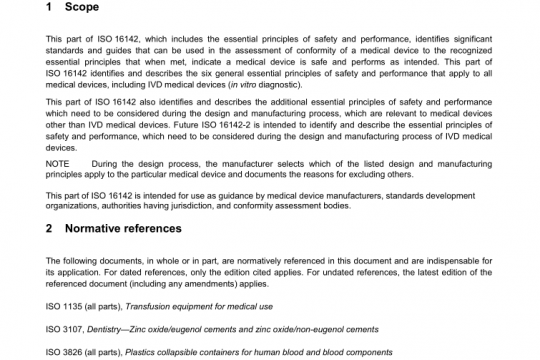AAMI ST37 pdf free download
AAMI ST37 pdf free download.Flash sterilization – Steam sterilization of patient care items for immediate use.
2.25 sterilizer, steam-flush pressure-pulse type: type of sterilizer in which a repeated sequence consisting of a steam flush and a pressure pulse removes air from the sterilizing chamber and processed materials using steam at above atmospheric pressure (no vacuum is required). NOTELike a prevacuum sterilizer, a steam-flush pressure-pulse sterilizer rapidly removes air from the sterilizing chamber and wrapped items; however, the system is not susceptible to air leaks because air removal is achieved with the sterilizing chamber pressure at above atmospheric pressure. Typical operating temperatures are 121° C to 123° C (250° F to 254° F), 132° C to 135° C (270° F to 275° F), and 141° C to 144° C (285° F to 291° F). 3 Design considerations 3.1 General rationale This section provides guidelines for the design and maintenance of the workplace to minimize bioburden, facilitate effective and efficient processing, and prevent contamination of items that are flash-sterilized. 3.2 Traffic control Traffic in areas in which flash sterilization is carried out should be restricted to authorized personnel. There should be controlled access. The decontamination, preparation, and sterilization areas should be located away from patients and from personnel not involved in the sterilization process. Written policies and procedures should be developed and communicated to all involved personnel. The responsibility and authority for enforcing these policies should be specified, as should methods of compliance.Rationale: Controlled access to the decontamination, preparation, and sterilization areas minimizes the transfer of microorganisms from contaminated items to patients and personnel. These practices also minimize the potential for contamination of flash-sterilized items during removal from the sterilizer and transfer to the point of use. Recommendations for traffic patterns in the operating room have been provided by the Association of Operating Room Nurses (AORN, 1994c)The area in which instruments and other devices are decontaminated should be physically separated from the area where items are inspected and reassembled for sterilization (i.e., the preparation area), from the sterilization area, and from areas in which clean or sterile patient care procedures are carried out. Doors separating the decontamination area from adjoining clean spaces should remain closed. NOTEWhile physical separation of decontamination and clean/sterile areas in operating room suites is desirable, spatial separation may be satisfactory if accompanied by good work flow patterns, air-flow characteristics, and work practices. Rationale: In the process of washing or cleaning contaminated items, fluids can be splashed or aerosols created. These fluids and aerosols are laden with microbial flora from the contaminated devices. Contamination can also be spread by personnel who indiscriminately touch environmental surfaces, other devices, or other personnel with soiled hands. Physical enclosure of the decontamination area and appropriate ventilation controls are necessary, because contaminated aerosols, droplet nuclei, and dust particles can be carried from “dirty” to clean areas by air currents.The temperature in the decontamination area should be controlled to between 20° C and 23° C (68° F to 73° F). Relative humidity should be controlled to a range of 30-60 %. Rationale: The work area should be warm enough and humid enough to be comfortable for properly attired personnel. Temperatures and humidities higher than those recommended can produce an environment conducive to microbial growth and thus increase the overall bioburden. The specific temperature and humidity ranges are recommended by the American Institute of Architects (AIA, 1996).AAMI ST37 pdf download.
Other IEC Standards
-

ANSI AAMI ISO 16142-1 pdf free download – non-IVD medical devices and guidance on the selection of standards
AAMI standards list DOWNLOAD -

ANSI AAMI ISO 16142-2 pdf free download – General essential principles and additional specifc essential principles
AAMI standards list DOWNLOAD


